#tian zhuangzhuang
Text






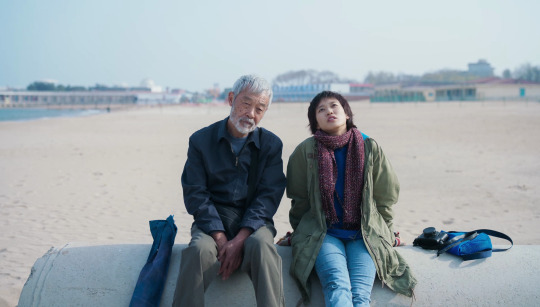
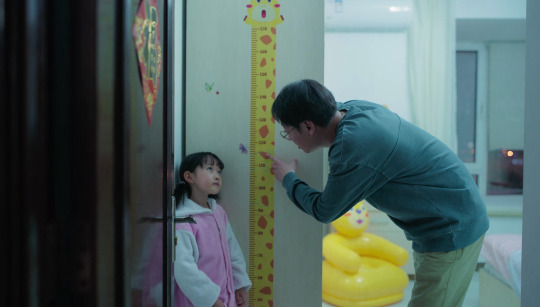


The Shadowless Tower (Zhang Lu, 2023)
#films watched in 2024#The Shadowless Tower#Zhang Lu#2023#Bai Ta Zhi Guang#Xin Baiqing#Huang Yao#siete#drama#Tian Zhuangzhuang#Nan Ji#beach#long shot#loneliness#China#Burning#lee chang dong#bus
122 notes
·
View notes
Text
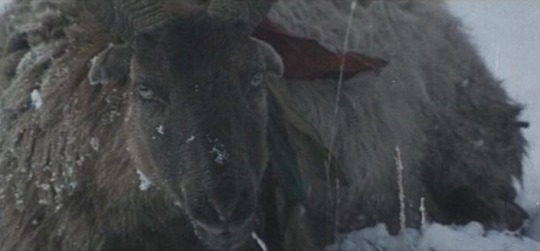
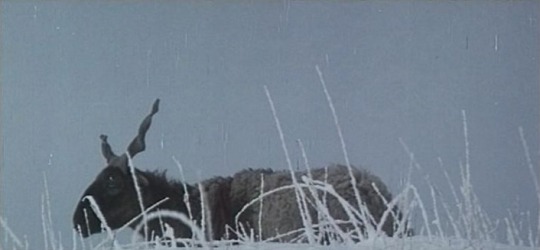
盗马贼 (The Horse Thief | Tian Zhuangzhuang | 1986)
11 notes
·
View notes
Text
Film #912: 'The Horse Thief', dir. Tian Zhuangzhuang, 1986.
The Horse Thief makes for quite an interesting viewing experience these days. It's rare for a film on the list to have left such a small footprint - I could find a handful of in-depth articles, as well as the (almost mandatory) Senses of Cinema review. Besides this, though, there's almost nothing that lays Tian Zhuangzhuang's film out in clear detail. There's hardly even a detailed plot summary which, for a film that tells most of its story through opaque images, puts me in the bizarre position of only being mostly sure I know what happened. So let's try and examine this film's plot, as much as it seems to have one.
Norbu is a horse thief by trade, living in the Tibetan mountains in 1923. When the film starts, he does this reluctantly and only in order to feed his family. Despite the disapproval of his elders (especially his grandmother), he tries to live righteously as much as possible, donating a large portion of his proceeds to the village's Buddhist temple. However, when he pockets a stolen item intended for the temple, the village elders can no longer ignore this behaviour and he, his wife and young son are exiled from the village. His son, who was already ill, dies young and Norbu and his wife are forced to endure the harsh environment alone. All is not well at the village, however, as famine besets even the most noble people. At long last, Norbu and his wife have another child and, desperate to provide for them, Norbu returns to stealing horses. He sends his wife off with some silver and, depending on how you interpret the film's final shots, is either killed or kills himself.

This ambiguity is one of the things I enjoyed most about the film, for several reasons. Overall, the film's central conflict appears to be between survival and living a noble life. Buddhist ideologies saturate The Horse Thief at every level, which removes the film's plot from a simple black-and-white morality. Norbu's grandmother frequently cites 'goodness' as a determiner of someone's worth, and muses that Norbu will never get into heaven, but it seems that this is a shallow estimation of her grandson's life, and that Norbu actually strives hard to live a noble life to the best of his ability. The fundamental question of the conflict is 'Is it better to starve, if the alternative is to commit crimes? Or can someone still be virtuous while committing crimes?' This makes one of the final images of the film, of Norbu's dagger in the snow, surrounded by spilled blood, a test of the audience's interpretation. If he's been killed by someone he's wronged, then karma has finally wrought vengeance on him. If he's killed himself, then he has reached a judgment himself about the film's central conflict.
I find this second option more narratively appealing, but another benefit of the film's ambiguity is that I have no idea whether narrative appeal is meant to be the metric by which I judge the likelihood of an interpretation. Long stretches of the film are given over to meditations on landscapes and events: famine strikes the land, and for four or five minutes we watch villagers dig a grave, or watch Norbu carrying an effigy of death into a river, that the assembled villagers then pelt with stones while Norbu struggles back to shore (he helps himself to several piles of coins while the villagers are distracted, or perhaps this is a legitimate payment). If there were a more direct plotline in this film - something that required more detailed explanation - I would say that the film puts its plot on hold for these sequences, but I actually think the reverse is true: the film pauses its meditations to tell meaningful elements of a simple story.
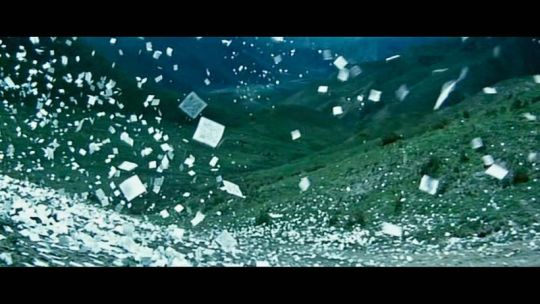
These visual sequences are stunning, and are the main reason why this film is still worth a watch. As with several of his other films, Tian's camera takes an almost ethnographic documentary approach to its subjects. We see Tibetan sky burials (although the censors apparently made Tian remove explicit images of dead bodies), Buddhist ceremonies, and grieving rituals. Without much dialogue to contextualise these events, they develop a sort of 'flow' entirely fitting for a depiction of a devoutly Buddhist society. John Berra's piece for Senses of Cinema suggests that these sequences initiate the viewer into seeing things from the Tibetan perspective. Writing on the sky burial scenes, he says "What could be interpreted by an outsider as an inhuman way to treat the remains of the recently deceased becomes a transcendent reverie: Tian illustrates how the community regards this ritual as one stage in a cycle of birth, death, and rebirth", adding that the eerie merging of chanting and synthesiser on the soundtrack further enhances this transcendent feeling.
Given its unusual style, this film seems like it should be a cinephile's dream, so what happened? Why is it so little-known? Some of the factors around the film's reception are obvious - it was a financial failure on its release, partly due to its subject matter and partly due to its experimental and poetic structure. Berra states that only ten prints of the film were initially made for release. One of the other elements, though, is the political lens through which the film was interpreted. A Chinese director setting a film in Tibet, which the Chinese government had annexed in the early 1950s, meant that the film would naturally be interpreted using this metaphor. Even a traditional, happy narrative film would have been fraught; one that included famine and exile was even more prone to interpretation. The Chinese censors insisted that a title card be included, which set the film's action in 1923. However, this was not enough to overcome the public's apathy, and The Horse Thief remained virtually unknown, even after Martin Scorsese declared it the best film of the decade. Tian continued to skate on thin political ice: his 1993 film The Blue Kite, explicitly critical of Chinese political events, resulted in him getting banned from filmmaking for nearly a decade.
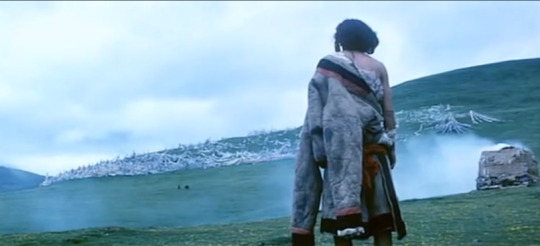
Despite this reception, The Horse Thief remains an interesting and timeless watch. It reminds me in some ways of the essay films made by directors like Chris Marker and Godfrey Reggio at around the same time (Reggio's Koyaanisqatsi was made a few years before The Horse Thief, but shares the same sort of poetic structure). What I find especially appealing about the film, though, is how it marries this structure to the themes of Buddhist thought. The events of the film have a karmic justice to them, while the extended meditative sequences suggest that the events of Norbu's life just happen in sequence, a flow of time that cannot be stopped and can only with great difficulty be adjusted at all. Norbu is who he is, and has the values he has, and everything else follows from there. While this film is certainly an acquired taste, its imagery lingers in the mind. Tian said in an interview that he made the film "for audiences of the next century to watch", and it seems to be as potent now as it was over thirty years ago.
2 notes
·
View notes
Text



















the blue kite, tian zhuangzhuang 1993
#chinese cinema#the blue kite#tian zhuangzhuang#1993#material#buw#the lost tapes#eine feste burg#dietrich#tp2#tradewind pictures#ostlicht#freie hilfe#erpressung#kinski geisel#pressefreiheit#meinungsfreiheit#about photography#eraserhead#inland empire#gods own medicine#morgens um sieben ist die welt noch in ordnung
0 notes
Text
the blue kite (1993) hits many of the same story beats as other late-20th century films about mid-20th century china, but with an interesting shift in framing device and narrative scope. where films like the last emperor (1987) and farewell my concubine (1992) take an epic scope to the period, with vast casts, expensive sets, and drama keyed to the medium of opera, and where films like hibiscus town (1986) and to live (1994) reduce their scale to that of a single ordinary person or couple’s tragedy, with other ordinary tragedies in the background—an ironic inversion of the ordinary peoples’ victories so celebrated in the stories of the 40s and 50s—this film follows red sorghum (1987) and anticipates the road home (1999) in its “fairy tale” framing, the narrative guided by a voiceover of a child character recollecting the experience after the fact. as in the other cases, this device softens the violence of the events until softening is impossible, at which point the violence comes into focus as a horrible and senseless loss of innocence. in red sorghum (1987), the brutality of the invading japanese troops is utterly at odds with the sweetness of the romance it snaps off; in this film, the narrative progresses as a soap opera-like tale of familial bonds through hardship, until the storybook-like “hardship” becomes open violence in the street. lacking the vitriol and paranoia of hibiscus town (1986), this film instead takes advantage of the extreme youth of its point-of-view character to portray the cultural revolution as a fundamentally childish movement, an adolescent view of the world made martial law. while this portrayal may not have the visceral emotionality of hibiscus town (1986), the grand sense of loss of the last emperor (1987) and farewell my concubine (1992), or the piercing sense of tragedy of to live (1994), the political directness and articulation of the blue kite (1993) surpasses any of these, and the picture it paints is plainly and beautifully rendered
#this is my first tian zhuangzhuang film if you can believe it#definitely liked it a lot#the blue kite#ryddles
12 notes
·
View notes
Text
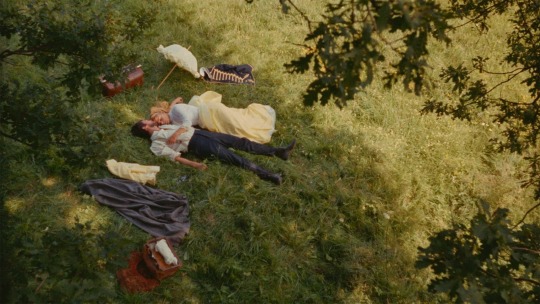
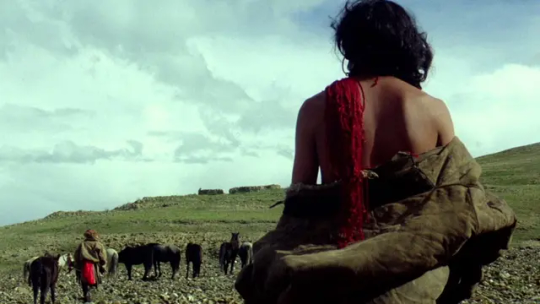
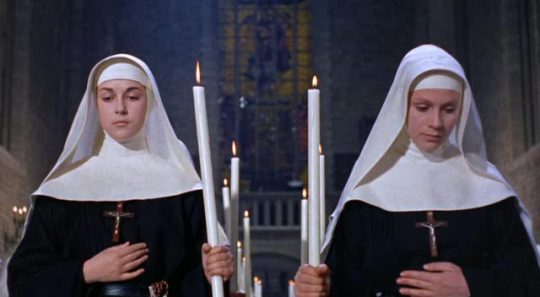
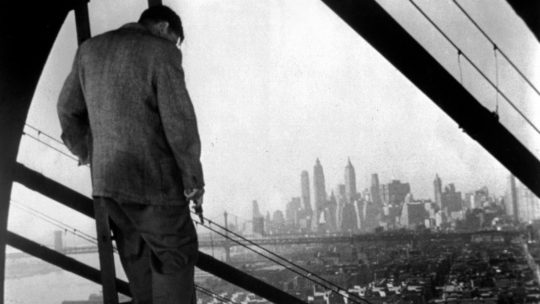
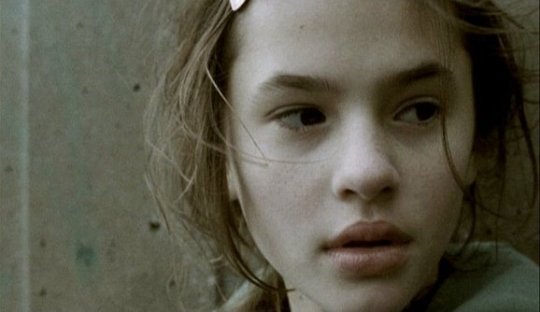
Favorite films watched in April 2024:
Elvira Madigan (1967), dir. Bo Widerberg
The Horse Thief (1986), dir. Tian Zhuangzhuang
The Nun's Story (1959), dir. Fred Zinnemann
The Naked City (1948), dir. Jules Dassin
Anna (2009), dir. Rúnar Rúnarsson
#w24*#2024 in films#films of 2024#elvira madigan#bo widerberg#the horse thief#the nun's story#the naked city
36 notes
·
View notes
Photo










Qiu Tian 邱天 for WSJ China, Jan. 2023
Photography: Fan Xin
Styling: Wu Jiacheng
Makeup: Tian Zhuangzhuang
Hairstyle: Xiaotian
#qiu tian#cdramaedit#wocedit#thequeensofbeauty#femaledaily#userladiesblr#glamoroussource#dailywomen#pocedit#userbbelcher#chewieblog#flawlessbeautyqueens#dailywoc#breathtakingqueens#ladiesofcinema#photoshoot#tvactorsdaily#userwocs#luni#+#*e
111 notes
·
View notes
Text
Asian Cinema: A Glimpse

Asian cinema has a rich and diverse history, with its origins dating back to the early 20th century. Over the years, Asian films have gained worldwide recognition and critical acclaim, captivating audiences with their unique storytelling, visual style, and cultural significance. In this post, we'll take a look at the origins of Asian films, explore the major Asian markets including Korean, Japanese, and Chinese cinema, and reference some of the most influential directors, studios, and actors who have contributed to Asian filmmaking.
The Origins of Asian Films
The history of Asian cinema can be traced back to the early 1900s, when the Lumière brothers brought their motion picture camera to Asia, sparking interest in the region's emerging film industry. However, it wasn't until the 1920s and 1930s that Asian filmmakers began producing their own films. At the time, many Asian countries were still under colonial rule, and the film industry was heavily influenced by Western cinema. Nevertheless, Asian filmmakers found ways to incorporate their own cultural elements into their films, paving the way for a unique and distinct style of Asian cinema.
Korean Cinema
Korean cinema has undergone a significant transformation over the years, from its humble beginnings in the 1910s to its emergence as a major player in the global film industry today. During the 1960s and 1970s, Korean filmmakers focused on producing commercial films for domestic audiences, known as "genre cinema." However, in the 1990s, a new wave of filmmakers emerged, bringing a more art-house style of filmmaking to Korean cinema. This new wave was led by directors such as Bong Joon-ho, Park Chan-wook, and Lee Chang-dong, who have since gained international recognition for their work.
Some of the most notable Korean films include Bong Joon-ho's "Parasite," which won the Palme d'Or at the 2019 Cannes Film Festival, as well as Park Chan-wook's "Oldboy" and Lee Chang-dong's "Burning." Korean actors such as Song Kang-ho, Choi Min-sik, and Lee Byung-hun have also gained international recognition for their performances in Korean films.

Japanese Cinema
Japanese cinema has a long and rich history, dating back to the early 1900s. During the 1950s and 1960s, Japanese cinema gained international recognition with the emergence of the "Golden Age" of Japanese cinema, which was characterized by a focus on social realism and a critique of post-war Japanese society. During this period, directors such as Akira Kurosawa, Yasujirō Ozu, and Kenji Mizoguchi gained worldwide acclaim for their work.
Today, Japanese cinema continues to be a major player in the global film industry, with notable directors such as Hayao Miyazaki, Hirokazu Kore-eda, and Takashi Miike. Some of the most notable Japanese films include Miyazaki's "Spirited Away," which won the Academy Award for Best Animated Feature in 2003, as well as Kore-eda's "Shoplifters" and Miike's "Audition." Japanese actors such as Toshiro Mifune, Takeshi Kitano, and Rinko Kikuchi have also gained international recognition for their performances in Japanese films.
Chinese Cinema
Chinese cinema has undergone significant changes over the years, from its early beginnings in the 1920s to its current status as a major player in the global film industry. During the 1930s and 1940s, Chinese cinema was heavily influenced by Hollywood and focused on producing commercial films for domestic audiences. However, during the 1980s and 1990s, Chinese cinema underwent a significant transformation, with the emergence of the "Fifth Generation" of Chinese filmmakers who brought a more art-house style of filmmaking to Chinese cinema. This new wave was led by directors such as Zhang Yimou, Chen Kaige, and Tian Zhuangzhuang, who gained international recognition for their work.
Today, Chinese cinema is a major player in the global film industry, with notable directors such as Jia Zhangke, Wong Kar-wai, and Ang Lee. Some of the most notable Chinese films include Zhang Yimou's "Raise the Red Lantern," Wong Kar-wai's "In the Mood for Love," and Ang Lee's "Crouching Tiger, Hidden Dragon." Chinese actors such as Gong Li, Tony Leung, and Zhang Ziyi have also gained international recognition for their performances in Chinese films.
In addition to Korean, Japanese, and Chinese cinema, other Asian markets such as Indian cinema, also known as Bollywood, and Iranian cinema have also gained international recognition for their unique styles and cultural significance.
Conclusion
Asian cinema has a rich and diverse history, with its origins dating back to the early 20th century. Over the years, Asian films have gained worldwide recognition and critical acclaim, captivating audiences with their unique storytelling, visual style, and cultural significance. The emergence of new waves of filmmakers and the recognition of Asian films at major international film festivals have contributed to the growing global influence of Asian cinema. With the rise of streaming services and digital platforms, Asian cinema is now more accessible than ever, providing audiences around the world with the opportunity to explore the rich and diverse world of Asian films.
1 note
·
View note
Text
Berlinale 2023 - Competition Lineup
January 23, 2023 - the Berlinale announced the titles from the Competition section.
18 films will compete for the Golden and the Silver Bears. Productions from 19 countries are represented. 15 films are world premieres. Six films were directed by women. Eleven filmmakers have been at the festival before, eight in Competition. There are three debut films represented in the Competition program.
20.000 especies de abejas (20,000 Species of Bees)
by Estibaliz Urresola Solaguren | with Sofía Otero, Patricia López Arnaiz, Ane Gabarain, Itziar Lazkano, Sara Cózar
Spain 2023
Competition | World premiere
Bai Ta Zhi Guang (The Shadowless Tower / Der schattenlose Turm)
by Zhang Lu | with Xin Baiqing, Huang Yao, Tian Zhuangzhuang, Nan Ji, Wang Hongwei
People’s Republic of China 2022
Competition | World premiere
Bis ans Ende der Nacht (Till the End of the Night)
by Christoph Hochhäusler | with Timocin Ziegler, Thea Ehre, Michael Sideris
Germany 2023
Competition | World premiere
BlackBerry
by Matt Johnson | with Jay Baruchel, Glenn Howerton, Matt Johnson, Cary Elwes, Saul Rubinek
Canada 2023
Competition | World premiere
Disco Boy
by Giacomo Abbruzzese | with Franz Rogowski, Morr Ndiaye, Laëtitia Ky, Leon Lučev
France / Italy / Belgium / Poland 2023
Competition | World premiere | Debut film

Disco Boy
Le grand chariot (The Plough)
by Philippe Garrel | with Louis Garrel, Damien Mongin, Esther Garrel, Lena Garrel, Francine Bergé
France / Switzerland 2022
Competition | World premiere
Ingeborg Bachmann – Reise in die Wüste (Ingeborg Bachmann – Journey into the Desert)
by Margarethe von Trotta | with Vicky Krieps, Ronald Zehrfeld, Tobias Resch, Basil Eidenbenz, Luna Wedler
Switzerland / Austria / Germany / Luxembourg 2023
Competition | World premiere
Irgendwann werden wir uns alles erzählen (Someday We’ll Tell Each Other Everything)
by Emily Atef | with Marlene Burow, Felix Kramer, Cedric Eich
Germany 2023
Competition | World premiere
Limbo
by Ivan Sen | with Simon Baker, Rob Collins, Natasha Wanganeen, Nicholas Hope, Mark Coe
Australia 2023
Competition | World premiere

Limbo
Mal Viver (Bad Living)
by João Canijo | with Anabela Moreira, Rita Blanco, Madalena Almeida, Cleia Almeida, Vera Barreto
Portugal / France 2023
Competition | World premiere
Manodrome
by John Trengove | with Jesse Eisenberg, Adrien Brody, Odessa Young, Sallieu Sesay, Phil Ettinger
United Kingdom / USA 2023
Competition | World premiere
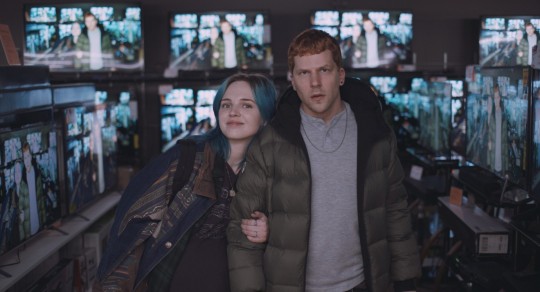
Manodrome
Music
by Angela Schanelec | with Aliocha Schneider, Agathe Bonitzer, Marisha Triantafyllidou, Argyris Xafis
Germany / France / Serbia 2023
Competition | World premiere
Past Lives
by Celine Song | with Greta Lee, Teo Yoo, John Magaro
USA 2022
Competition | International premiere | Debut film
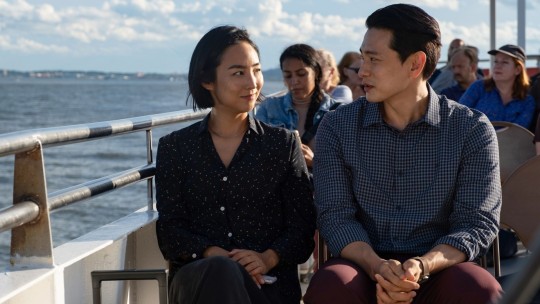
Past Lives
Roter Himmel (Afire)
by Christian Petzold | with Thomas Schubert, Paula Beer, Langston Uibel, Enno Trebs, Matthias Brandt
Germany 2023
Competition | World premiere

Afire
Sur l’Adamant (On the Adamant)
by Nicolas Philibert
France / Japan 2022
Competition | World premiere | Documentary Form
The Survival of Kindness (Das Überleben der Freundlichkeit)
by Rolf de Heer | with Mwajemi Hussein, Deepthi Sharma, Darsan Sharma
Australia 2022
Competition | International premiere
Suzume
by Makoto Shinkai
Japan 2022
Competition | International premiere | Animation
Tótem
by Lila Avilés | with Naíma Sentíes, Monserrat Marañon, Marisol Gasé, Saori Gurza, Teresita Sánchez
Mexico / Denmark / France 2023
Competition | World premiere
We are happy to see diversity including female directors and debut films. We wish all the best to every team showing their work in this prestigious film festival.
Rendez-vous on February 25 to know the recipients of Golden and Silver Bears.
1 note
·
View note
Photo










Springtime in a Small Town 小城之春
2002
Tian Zhuangzhuang
7 notes
·
View notes
Text
The Horse Thief (1986)




盗马贼 The Horse Thief (1986)
directed by Tian Zhuangzhuang
10 notes
·
View notes
Text









盗马贼 (The Horse Thief | Tian Zhuangzhuang | 1986)
6 notes
·
View notes
Text

The Horse Thief, 1986
6 notes
·
View notes
Text







the blue kite, tian zhuangzhuang 1993
#the blue kite#tian zhuangzhuang#1993#about photography#sophie scholl#sophie scholl – die letzten tage#uhw#freie hilfe#kinski geisel#ukraine#chinese cinema
0 notes
Photo




后来的我们 - Us and Them dir. Rene Liu (2018)
#后来的我们#rene liu#us and them#netflix#netflix movie#us and them netflix#movie#movie quotes#movie quote#film#drama films#chinese movie#Jing Boran#Zhou Dongyu#Tian Zhuangzhuang#井柏然#周冬雨#田壮壮
199 notes
·
View notes
Photo






the horse thief (tian zhuangzhuang, 1986)
27 notes
·
View notes